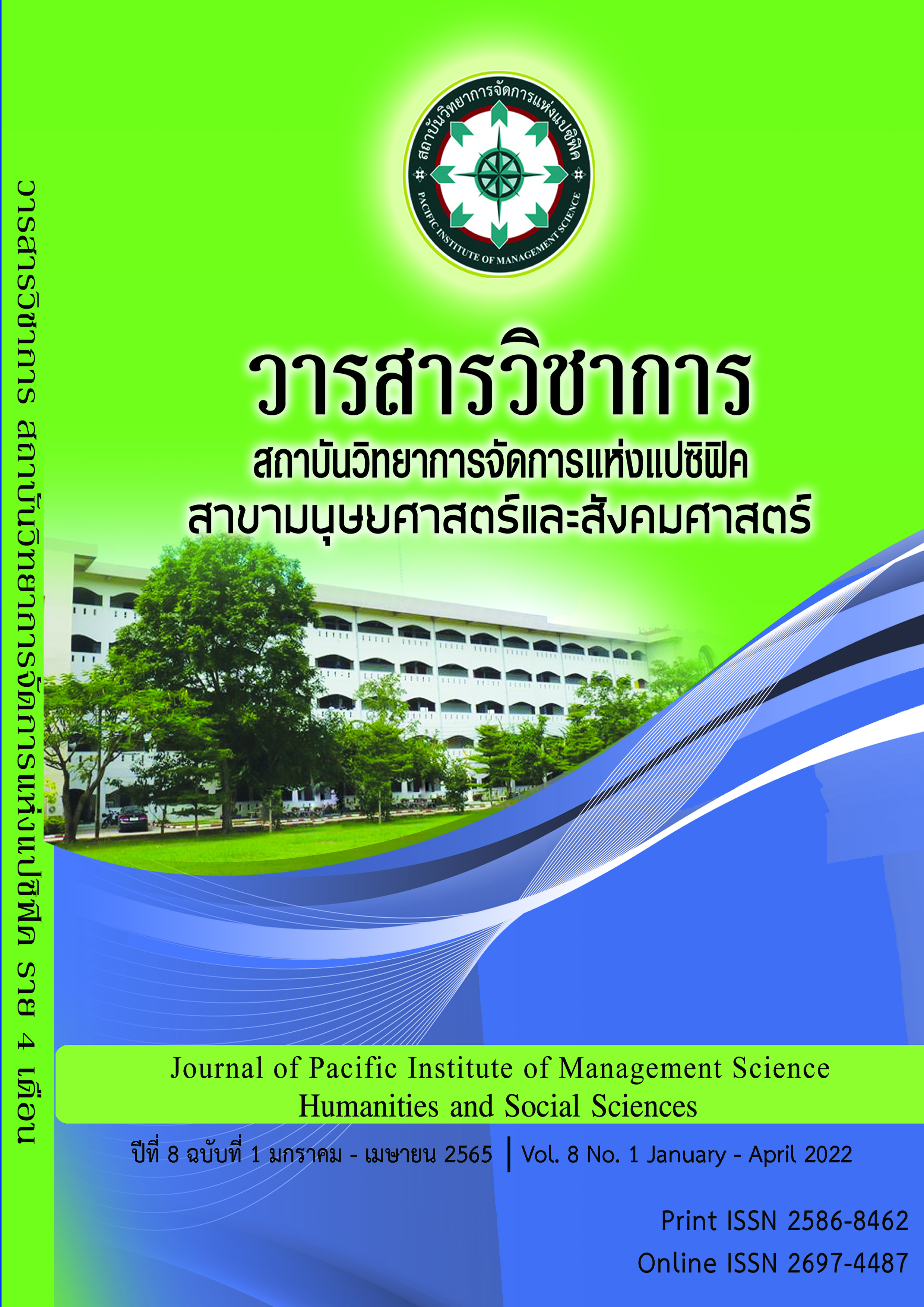The Study of Knowledge Management for Marketing Promotion of Kham Kheob Textile Product by Using English Language at Nan Province
Keywords:
Knowledge Management, Kham Kheob fabric weaving, Marketing promote, English languageAbstract
This study aimed 1) To promote and develop the marketing of Kham Kheob fabric weaving products in Nan province, 2) To manage knowledge of Kham Kheob fabric weaving products using English and 3) To promote the marketing of Kham Kheob fabric weaving products by using English. This research was mixed method research. There were 20 key informants from 4 weaving community enterprises at Nan province. The research tools were structured interview and focus group based on 7 steps of knowledge management system.
The result on the first research objective showed that Kham Kheob fabric weaving is a unique fabric that the 4 community enterprise groups showed the 7-steps knowledge management results as follows: Ban Sao Luang Woven Fabric Enterprise Group was the group that had the most systematic management of English language knowledge followed by Ban Na Pong Pattana Community Enterprise Group. Ban Don Chai Tourism Community Enterprise and Teen Jok Nam Pua weaving community enterprises, respectively. The results of the research according to objective number 2 revealed that the knowledge management of community enterprise groups had a strategy to successfully promote English language skills as there were 5 important teaching strategies. The results of the research according to the third objective revealed that the scores on the competency assessment of the community enterprise groups before and after the English language skill development had an increase in average scores. The average score of pre-test was 9.97, representing 49.83% (S.D. = 2.76), and the average score of post-test was 15.94, representing 74.5% (S.D. = 2.26). In addition, the Kham Kheob Weaving Community Enterprise Group has developed and obtained guidelines for knowledge management in the future.
References
ดรรชนี เอมพันธุ์, การพัฒนาการท่องเที่ยวโดยชุมชนและการจัดกิจกรรมโฮมสเตย์, กรุงเทพฯ:
สำนักพิมพ์มหาวิทยาลัยเกษตรศาสตร์, 2550.
ณัฏฐพัชร มณีโรจน์, การจัดการการท่องเที่ยวโดยชุมชน, วารสารวิชาการการท่องเที่ยวไทย
นานาชาติ, 13(2), 25-46, 2560.
ณรงค์ สมพงษ์, ศศิฉาย ธนะมัย และสุรชัย ประเสริฐสรวย, “การจัดการความรู้ภูมิปัญญาท้องถิ่น
แบบมีส่วนร่วมของชุมชนที่มีต่อการพัฒนาการศึกษา และอาชีพการเกษตรในท้องถิ่น.”
ศึกษาศาสตร์ปริทัศน์ 27, 1 (มกราคม-เมษายน 2555): 97-109.
ทรงศักดิ์ ปรางค์วัฒนากุล และแพทรีเซีย ซีแมน, ผ้าล้านนา ยวน ลื้อ ลาว, (2530), หน้า 13.
นพพร พวงสมบัติ, “กระบวนการเรียนรู้ของผู้ผลิตผ้าทอซิ่นตีนจก อำเภอแม่แจ่ม จังหวัดเชียงใหม่เพื่อรักษา
และสืบทอดเอกลักษณ์ทางวัฒนธรรม ท่ามกลางบริบทสังคมบริโภคนิยม”, วิทยานิพนธ์ปริญญา
มหาบัณฑิต.
ประเวศ วะสี, การจัดการความรู้: กระบวนการปลดปล่อยมนุษย์ สู่ศักยภาพ เสรีภาพ และ
ความสุข, (กรุงเทพฯ: สถาบันส่งเสริมการจัดการเรียนรู้เพื่อสังคม, 2548).
วิจารณ์ พานิช, การจัดการความรู้กับการบริหารราชการแนวใหม่, (เอกสารประกอบการบรรยาย
เรื่องการจัดการความรู้กับการบริหารราชการแนวใหม่ สถาบันส่งเสริมการจัดการความรู้เพื่อสังคม, 2548), หน้า 5-6.
วิบูลย์ ลี้สุวรรณ และคณะ, โครงการศิลปะอุตสาหกรรมไทย ชุดที่ 2 ผ้าไทยพัฒนาการทางอุตสาหกรรมและ
สังคม, (กรุงเทพมหานคร: บรรษัทเงินทุนอุตสาหกรรมแห่งประเทศไทย, 2530).
ศิรประภา โคบายาชิ และคณะ, การจัดการองค์ความรู้ภูมิปัญญาท้องถิ่นด้านการจักสานผลิตภัณฑ์จาก
ผักตบชวาของกลุ่มแม่บ้านหมู่บ้านต๋อมดง ตำบลบ้านต๋อม อำเภอเมือง จังหวัดพะเยา, วารสารวิจัย
เพื่อการพัฒนาเชิงพื้นที่ 4, 4 (มีนาคม-เมษายน 2555), หน้า 21-35.
Brown, H. (1994). Principles of language learning and teaching. New York: Pearson Education.
Corder, S. P. (1981). Error analysis and interlanguage. Oxford University Press.
Corder, S. P. (1983). Strategies in interlanguage communication. London: Longman.
Tarone, E. (1977). Conscious communication strategies in interlanguage: A progress report. TESOL 77, 194-203.
Downloads
Published
Issue
Section
License
Copyright (c) 2022 Pacific Institute of Management Science

This work is licensed under a Creative Commons Attribution-NonCommercial-NoDerivatives 4.0 International License.
บทความที่ได้รับการตีพิมพ์เป็นลิขสิทธิ์ของ สถาบันวิทยาการจัดการแห่งแปซิฟิค
ข้อความที่ปรากฏในบทความแต่ละเรื่องในวารสารวิชาการเล่มนี้เป็นความคิดเห็นส่วนตัวของผู้เขียนแต่ละท่านไม่เกี่ยวข้องกับสถาบันวิทยาการจัดการแห่งแปซิฟิค และคณาจารย์ท่านอื่นๆในสถาบันฯ แต่อย่างใด ความรับผิดชอบองค์ประกอบทั้งหมดของบทความแต่ละเรื่องเป็นของผู้เขียนแต่ละท่าน หากมีความผิดพลาดใดๆ ผู้เขียนแต่ละท่านจะรับผิดชอบบทความของตนเองแต่ผู้เดียว







